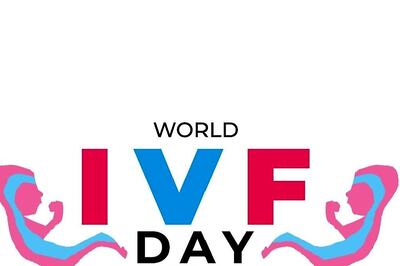
views
WASHINGTON: U.S. job growth slowed further in August as financial assistance from the government ran out, threatening the economy’s recovery from the COVID-19 recession.
Government hiring for the 2020 Census accounted for nearly a fifth of the employment gains reported by the Labor Department on Friday. Companies from transportation to manufacturing industries are announcing layoffs or furloughs. The moderation in hiring could pressure the White House and Congress to restart stalled negotiations for another fiscal package, and will likely become political ammunition for both Democrats and Republicans with just two months to go until the presidential election.
Programs to help businesses pay wages have either lapsed or are on the verge of ending. A $600 weekly unemployment supplement expired in July. Economists credited government largesse for the sharp rebound in economic activity after it nearly ground to a halt following the shuttering of businesses in mid-March to control the spread of the coronavirus.
Nonfarm payrolls increased by 1.371 million jobs last month after advancing 1.734 million in July. Government employment rose 344,000, with 238,000 temporary workers hired for the population count. Job growth peaked at 4.781 million in June.
The unemployment rate fell to 8.4% last month from 10.2% in July, even as more people entered the labor force. Economists polled by Reuters had forecast 1.4 million jobs added in August and the unemployment rate sliding to 9.8%.
Friday’s report is one of just two monthly labor market scorecards left on the calendar before the Nov. 3 presidential election. President Donald Trump, who is trailing in polls behind former Vice President Joe Biden, the Democratic Party nominee, is likely to tout the continued job gains as a sign that the economy is improving after suffering its biggest shock in at least 73 years in the second quarter.
But employment remains 11.5 million below its pre-pandemic level and the jobless rate is 4.9 percentage points higher than it was in February.
The dollar rose against a basket of currencies. U.S. Treasury prices fell.
LAYOFFS AND FURLOUGHS RISING
Most of the job gains have been workers being recalled from furloughs or temporary layoffs. Though new COVID-19 infections have subsided after a broad resurgence through the summer, many hot spots remain.
United Airlines said on Wednesday it was preparing to furlough 16,370 workers on Oct. 1. American Airlines has announced its workforce would shrink by 40,000, including 19,000 involuntary cuts. Ford Motor Co said it was targeting 1,400 U.S. salaried jobs for elimination by year end. Mass transit rail operators are also eyeing furloughs.
A report this week from the Federal Reserve based on information collected from the U.S. central bank’s contacts on or before Aug. 24 showed an increase in employment. The Fed, however, noted that “some districts also reported slowing job growth and increased hiring volatility, particularly in service industries, with rising instances of furloughed workers being laid off permanently as demand remained soft.”
Slowing job growth will likely have a limited impact on gross domestic product in the third quarter, which economists estimate could rebound at an annualized rate of as high as 30% after sinking at a historic 31.7% pace in the April-June quarter. But it will hurt fourth-quarter GDP, with consumer spending taking a hit.
Average hourly earnings increased 0.4% in August after edging up 0.1% in July. That left the annual increase in wage at 4.7%. The average workweek increased by 0.1 hour to 34.6 hours. The Labor Department’s Bureau of Labor Statistics, however, cautioned against reading too much into the longer workweek and higher earnings. Job losses during the pandemic have been concentrated in the low-wage services industries.
Private payrolls increased by 1.027 million jobs last month, with retail hiring rising 249,000. Professional and business services added 197,000 jobs, with more than half of the increase in temporary help services.
Employment in leisure and hospitality increased by 174,000 jobs, stepping down from the 621,000 gained in July. Manufacturing employment rose by 29,000. Construction added 16,000 jobs.
Disclaimer: This post has been auto-published from an agency feed without any modifications to the text and has not been reviewed by an editor



















Comments
0 comment